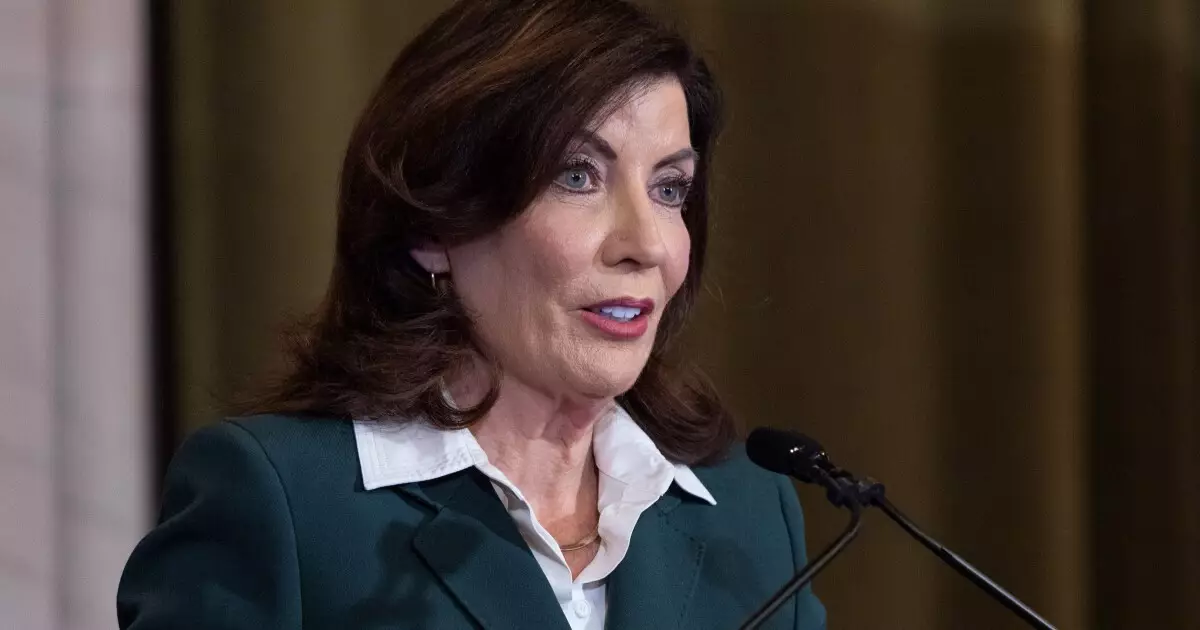The Political Impasse Over Congestion Pricing in New York City

The ongoing debate over congestion pricing in New York City exemplifies the intersection of politics, public policy, and urban infrastructure financing. The recent remarks made by New York City Comptroller Brad Lander underscore a palpable concern about the future of this vital initiative, which aims to alleviate traffic congestion while generating essential revenue for the Metropolitan Transportation Authority (MTA). The specter of Donald Trump’s presidency looms large over this discussion, creating uncertainty for a plan that could fundamentally reshape the city’s financial landscape. Lander’s statement reveals a frustration shared by many city officials who view the success of congestion pricing as pivotal to securing a $15 billion investment in public transportation.
In a stark declaration, Trump promised to eliminate congestion pricing within his first week back in office—a stance that aligns with the sentiments of some constituents who resist tolling in favor of preserving their driving autonomy. Such pronouncements underscore how political climates can dramatically affect urban policy initiatives, especially those perceived as burdensome by specific voter demographics.
The current predicament was exacerbated when New York Governor Kathy Hochul unexpectedly halted plans for the congestion pricing scheme a mere two weeks prior to its scheduled launch. While the reasons for this sudden postponement remain murky, it appears that Hochul is strategically assessing the political landscape in light of the election results. Despite some gains for Democrats—such as picking up three congressional seats—key decisions may hinge on public reception. Hochul’s approach reflects a tactical retreat, aiming to avoid alienating drivers from suburban areas who would bear the brunt of the financial burden associated with the program.
This tenuous political environment has generated pressure on state officials to find workable solutions that could appease various stakeholders. Hochul has reportedly consulted with the Department of Transportation to explore the feasibility of lower toll rates for passenger vehicles, signaling a willingness to reconsider aspects of the program that were previously non-negotiable. However, such changes would inevitably lead to rising costs for commercial vehicles and a reevaluation of plans to offer discounts for low-income drivers. The overarching requirement for congestion pricing to generate about $1 billion annually complicates these discussions, as any deviation from the original plan could necessitate comprehensive evaluations and regulatory approvals that may delay implementation further.
The consequences of inaction could be dire. Community leaders, transportation advocates, and fiscal analysts have all raised alarms about the crippling $16 billion funding gap created by the congestion pricing pause. The MTA, which has acknowledged its readiness to implement the plan, sits in a precarious position. With over $28.5 billion of its capital plan currently uncommitted, failure to advance congestion pricing could stall critical projects, including essential repairs and expansions to an already beleaguered transit system.
The agency’s attempt to develop a streamlined capital plan only highlights the challenges of financing a state-of-good-repair-focused initiative. MTA Chair Janno Lieber’s confidence in the state legislature’s ability to deliver necessary funding appears optimistic in the context of a fractured political environment where priorities may diverge significantly.
The stakes involved in congestion pricing illustrate how interconnected urban infrastructure is to the broader political landscape. If the program is sidelined further due to political maneuvering or lack of consensus, the implications for New York City could be profound, further straining an already stressed public transportation system. The specter of Trump’s potential interference adds another layer of complexity, as any attempts to disrupt the process could leave New Yorkers grappling with deteriorating transit infrastructure.
As city leaders consider their next steps, it is critical to recognize that the conversation surrounding congestion pricing is not merely about tolls; it reflects deeper societal values regarding transportation equity, environmental sustainability, and urban development. Therefore, finding common ground may require bold leadership and innovative thinking, challenging both state and federal powers to engage in more collaborative decision-making processes that prioritize the city’s long-term viability and resilience. As officials navigate these turbulent waters, the future of congestion pricing—and the fate of the MTA—hangs in the balance.





